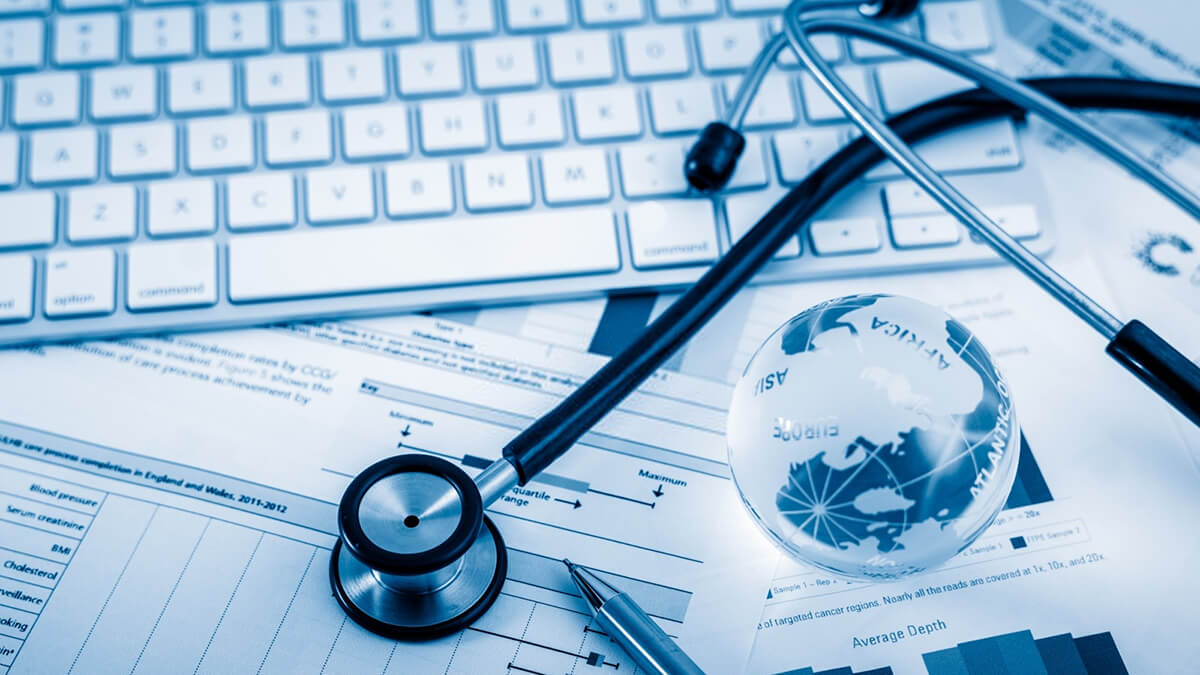How to Beginning a Successful Profession in Medical Administration: A Newbie's Guide
How to Beginning a Successful Profession in Medical Administration: A Newbie's Guide
Blog Article
Best Practices in Medical Management for Improving Effectiveness and Decreasing Costs
In the ever-evolving landscape of health care, the pursuit of best techniques in medical administration is critical for boosting efficiency and curbing expenditures. By incorporating innovative innovations such as electronic health documents and telemedicine, health care companies can improve operations and boost client treatment.
Leveraging Advanced Innovation
In today's swiftly progressing medical care landscape, leveraging advanced technology is no longer optional but necessary for efficient clinical administration. The integration of electronic remedies right into medical care systems has changed the way facilities run, streamlining procedures and boosting client care. Electronic Health Records (EHRs) are crucial, giving comprehensive client data that can be accessed instantly by licensed personnel, thus minimizing redundancy and minimizing errors. By streamlining client details, EHRs remove the demand for troublesome documents and assist in seamless interaction amongst healthcare carriers.
Telemedicine is one more technical advancement that has actually revolutionized person communication. It offers ease for both people and health care specialists by allowing remote examinations, which can minimize the need for in-person visits and optimize consultation organizing. In addition, telehealth systems can prolong healthcare access to rural or underserved areas, connecting gaps in treatment distribution.
In addition, making use of Artificial Intelligence (AI) and artificial intelligence is becoming progressively widespread in anticipating analytics, enabling for early detection of prospective health and wellness issues and more educated decision-making. These modern technologies, when integrated successfully, can boost analysis accuracy and customize client therapy plans, ultimately bring about enhanced medical care results and operational efficiency.
Optimizing Source Allocation
Reliable source allotment is essential for taking full advantage of the performance of medical management. By strategically managing sources such as workers, devices, and finances, medical care facilities can substantially boost their functional efficiency, boost client outcomes, and decrease unnecessary expenditures. The very first step in enhancing resource allowance entails conducting an extensive evaluation of existing properties and recognizing areas where resources might be underutilized or exhausted. This assessment ought to be data-driven, utilizing metrics and analytics to inform decision-making procedures.
Focusing on resource allowance based on person demands and service needs is essential. Applying flexible staffing versions can also maximize labor sources by changing workers allocation in response to rising and fall client volumes.
Funds should be thoroughly kept track of and assigned with calculated foresight to support both short-term operational needs and lasting institutional goals. This consists of investing in training programs that enhance team proficiencies and taking on energy-efficient practices that decrease operational costs (medical administration). Ultimately, an enhanced source allowance approach promotes a sustainable healthcare atmosphere that is responsive, efficient, and financially prudent
Streamlining Operations Procedures
When health care centers aim to boost operational efficiency, improving process processes ends up being a crucial emphasis. Effective workflows reduce redundancy, get rid of unneeded actions, and boost control among healthcare specialists. This strategy not only speeds up solution distribution however also improves the high quality of individual care.

Following, innovation combination plays a check this substantial function in enhancing process. Carrying out digital wellness documents (EHRs) and computerized doctor order entry (CPOE) systems decreases documentation, decreases human error, and ensures information check that comes to all relevant personnel. Additionally, leveraging telemedicine platforms can enhance individual examinations and follow-ups, decreasing the strain on physical infrastructure.

Inevitably, streamlined workflows result in cost decreases and boosted person complete satisfaction, promoting a more sustainable healthcare atmosphere.
Enhancing Data Administration
Building upon structured process, enhancing information administration ends up being an essential component in advancing medical care administration. Efficient data administration systems are important for keeping accurate individual records, enhancing decision-making, and making certain conformity with regulatory requirements. By applying robust information administration options, medical care centers can boost the high quality of individual treatment while concurrently reducing operational expenses.
One trick facet of improving data monitoring is the assimilation of sophisticated electronic health and wellness record (EHR) systems. These systems help with the seamless exchange of individual information throughout various divisions, reducing duplication of tests and decreasing mistakes. A properly designed EHR system supports information analytics, allowing medical care providers to determine patterns and make educated choices concerning individual treatment.
In addition, securing patient information is paramount. Embracing detailed cybersecurity steps, including file encryption and normal audits, makes certain the integrity and discretion of sensitive info. This not only safeguards patients yet additionally preserves the organization's online reputation.
Buying team training is an additional critical variable. Educating health care specialists on data monitoring methods boosts their ability to effectively make use of modern technology, causing enhanced client results. Finally, boosting data administration with advanced modern technology and detailed training is essential for accomplishing performance and expense decrease in medical administration.
Fostering Collaborative Interaction
An essential part in advancing medical management is cultivating collective communication amongst medical care specialists. Efficient communication is critical for making certain seamless individual care, enhancing treatment end results, and reducing errors. By motivating open discussion and coordination across multidisciplinary teams, medical care companies can improve their basics operational performance and decrease unneeded prices.
Central to this method is the assimilation of communication modern technologies such as digital wellness documents (EHRs) and safe messaging systems, which help with the rapid exchange of essential client info. These devices make it possible for doctor to access and share information in genuine time, ensuring that all employee are educated and lined up in their decision-making procedures. Normal team meetings and interdisciplinary rounds can better promote a society of cooperation and accountability.
Educating programs concentrated on enhancing interaction abilities are also necessary. These programs can help team establish the ability to share details plainly and pay attention proactively, therefore lowering misunderstandings and cultivating a supportive workplace. On top of that, taking on standard communication protocols, such as SBAR (Situation, Background, Analysis, Suggestion), can improve the exchange of info, making certain that essential details are conveyed succinctly and properly. Inevitably, fostering collective interaction brings about improved healthcare shipment and cost financial savings (medical administration).

Final Thought
Integrating advanced innovation, such as electronic wellness documents and telemedicine, alongside enhanced resource allocation and structured process processes, is crucial for enhancing effectiveness in medical management. Reliable data management and promoting collaborative communication among healthcare groups are crucial for decreasing redundancies and enhancing care top quality. By prioritizing preventive treatment and taking part in high quality improvement initiatives, healthcare organizations can accomplish significant expense savings and boosted client results, therefore guaranteeing lasting health care distribution in a progressively complex environment.
Report this page